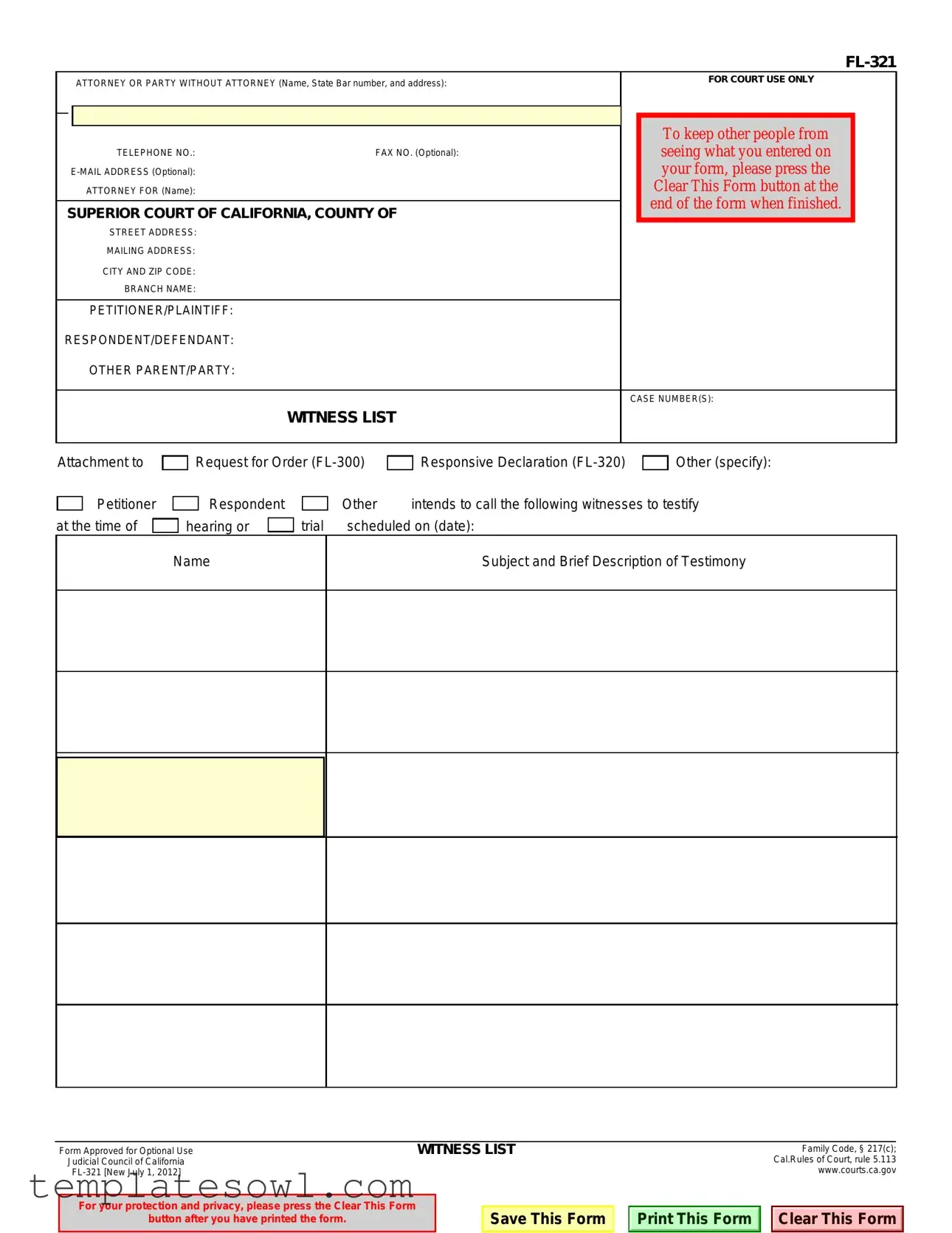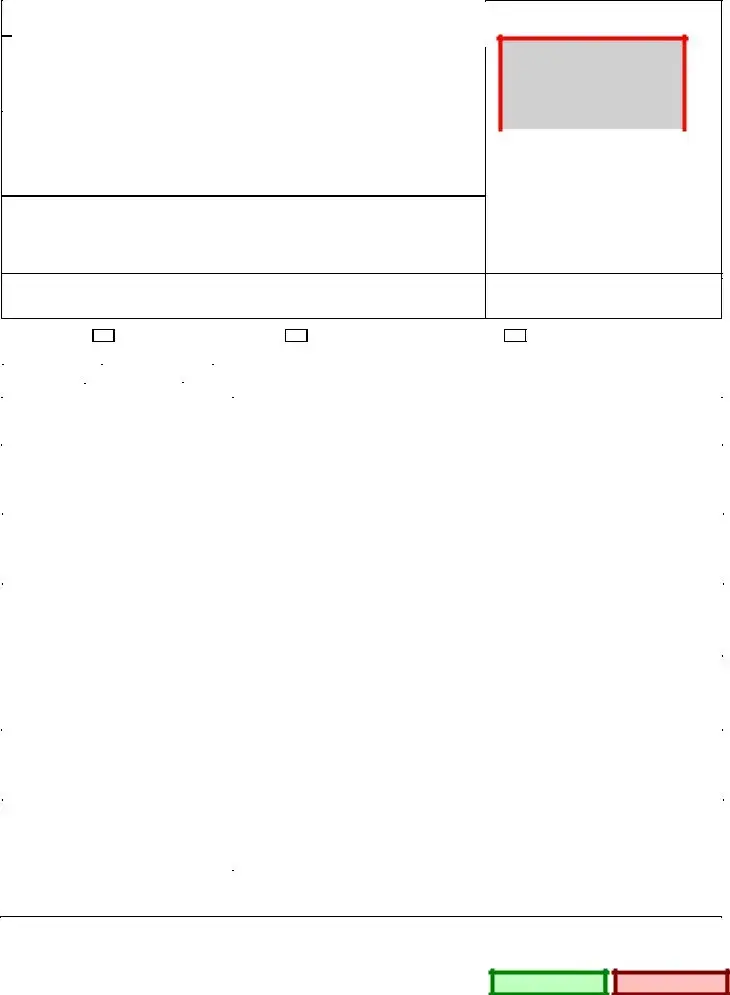What is the FL-321 form used for?
The FL-321 form is a Witness List that is submitted as an attachment to requests for orders or responsive declarations in family law cases. It allows parties to identify witnesses they intend to call to testify during hearings or trials.
Who should use the FL-321 form?
This form is used by petitioners, respondents, or any other party involved in a family court case. If you plan to call witnesses to support your case, you must complete and submit this form to ensure they are properly identified for the hearing.
How do I fill out the FL-321 form?
To fill out the FL-321, provide the names of your witnesses along with a brief description of the subject matter of their testimony. Ensure accuracy and clarity to avoid any confusion when the time for the hearing arrives.
When should I submit the FL-321 form?
The FL-321 form should be submitted well in advance of the hearing date. Check your local court rules for specific timelines to ensure it is filed on time along with any accompanying documents.
Is there a particular format I need to follow when listing witnesses?
There is no strict formatting requirement beyond clearly stating the witnesses’ names and a brief description of their intended testimony. Use bullet points for clarity if it helps organize the information better.
Can I add more witnesses after submitting the FL-321 form?
If you need to add more witnesses after the initial submission, you may need to file an amended version of the FL-321 form. Be sure to check with the court for any specific procedures or deadlines for making changes.
What happens if I do not submit the FL-321 form?
If you fail to submit the FL-321 form, the court may not allow your witnesses to testify during the hearing. It's crucial to follow this requirement to ensure your case is presented effectively.
Is the information on the FL-321 form public?
Yes, the information you provide on the FL-321 form becomes part of the public court record. To protect your privacy, you can choose to press the “Clear This Form” button after printing to remove sensitive data from your computer.
Where can I find the FL-321 form?
The FL-321 form can be obtained from the California courts website or your local superior court's clerk office. Most courts also provide a user-friendly online portal where you can download and print the form.

